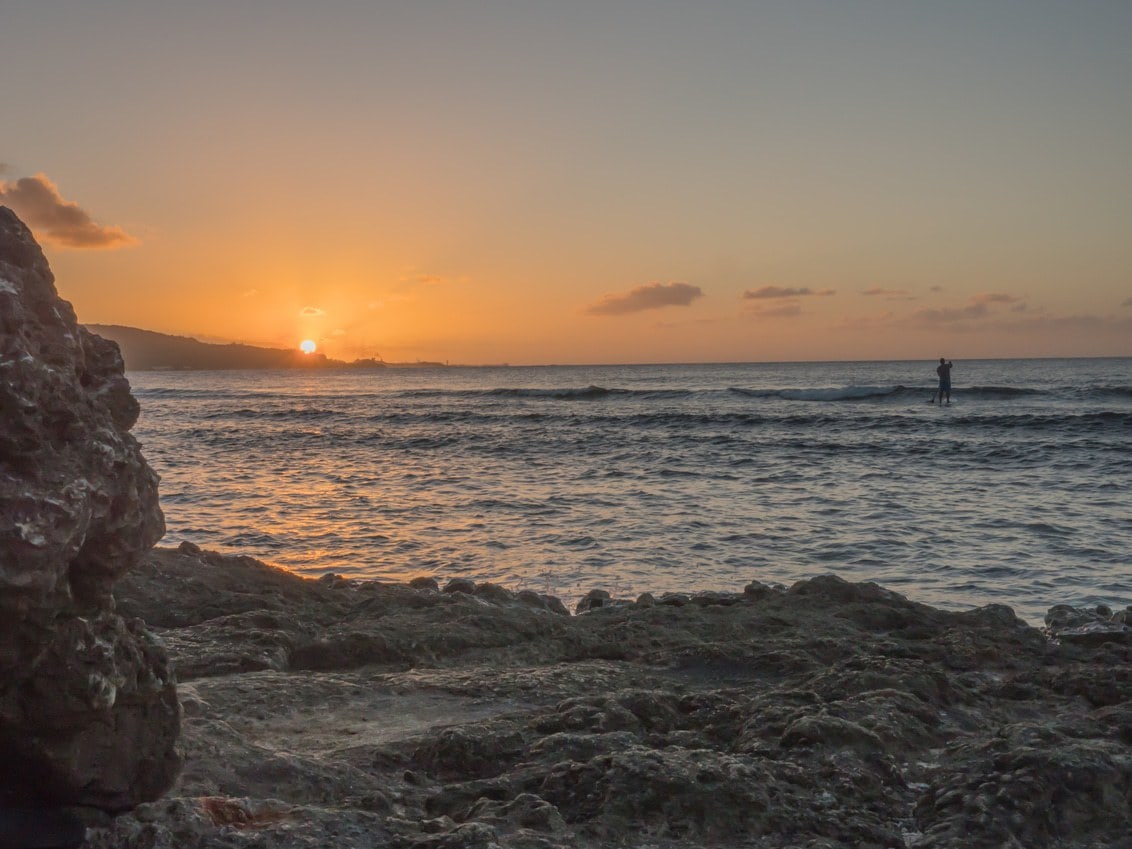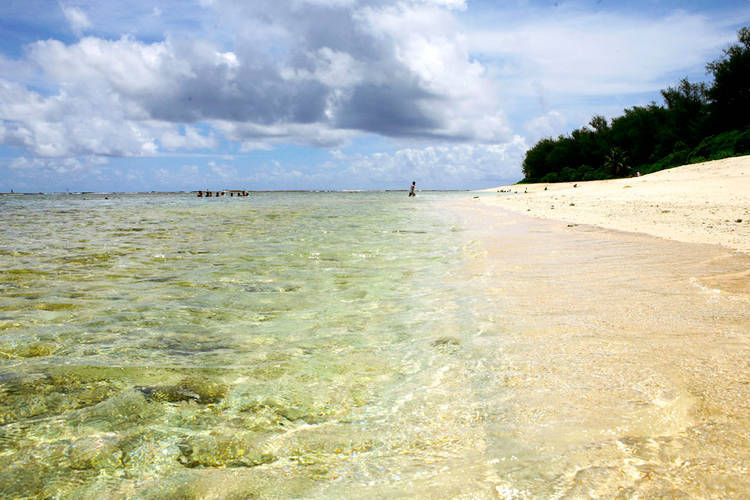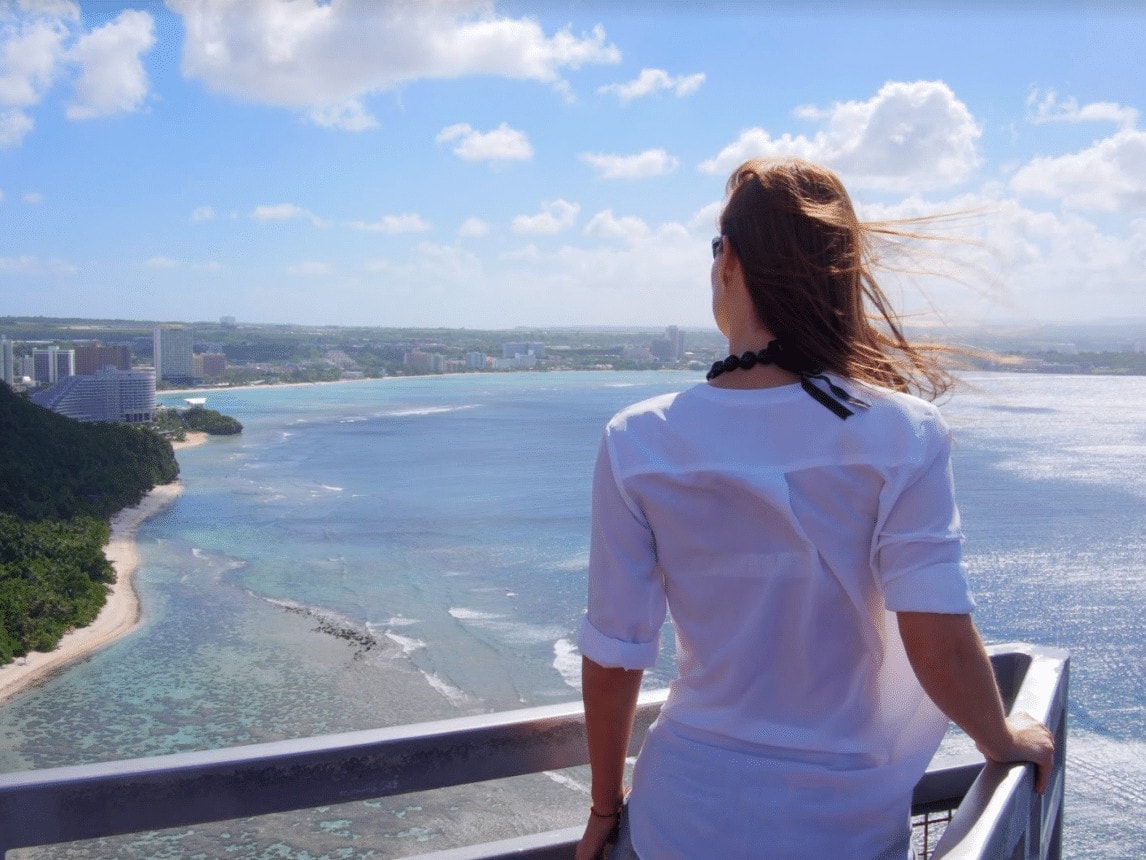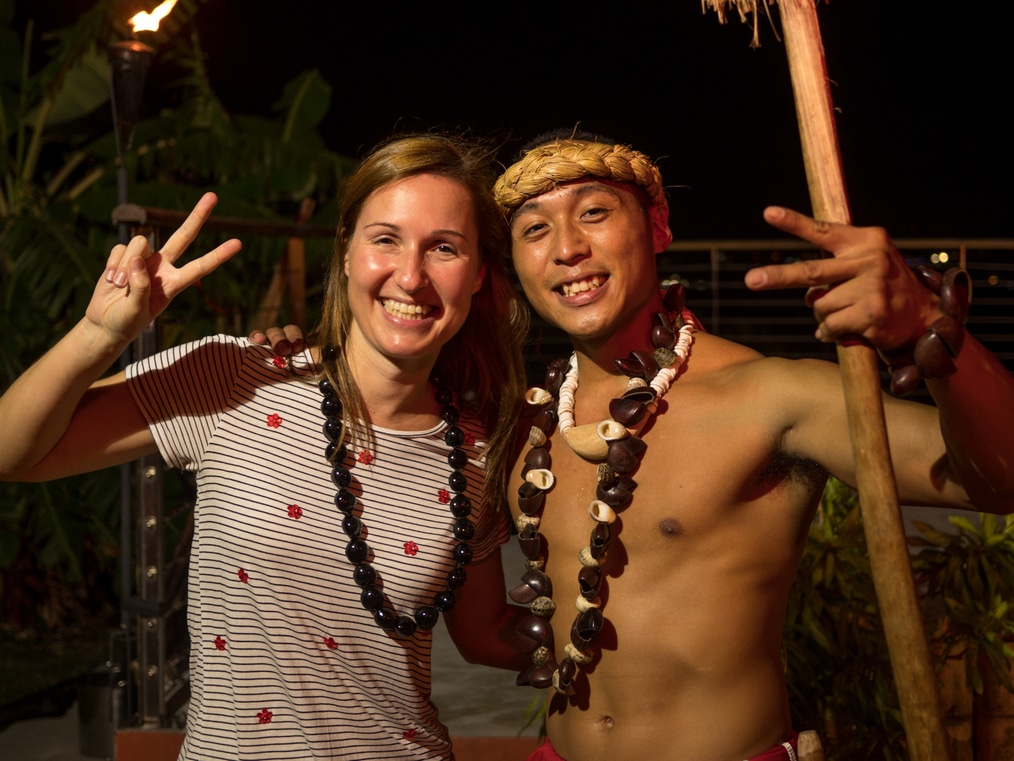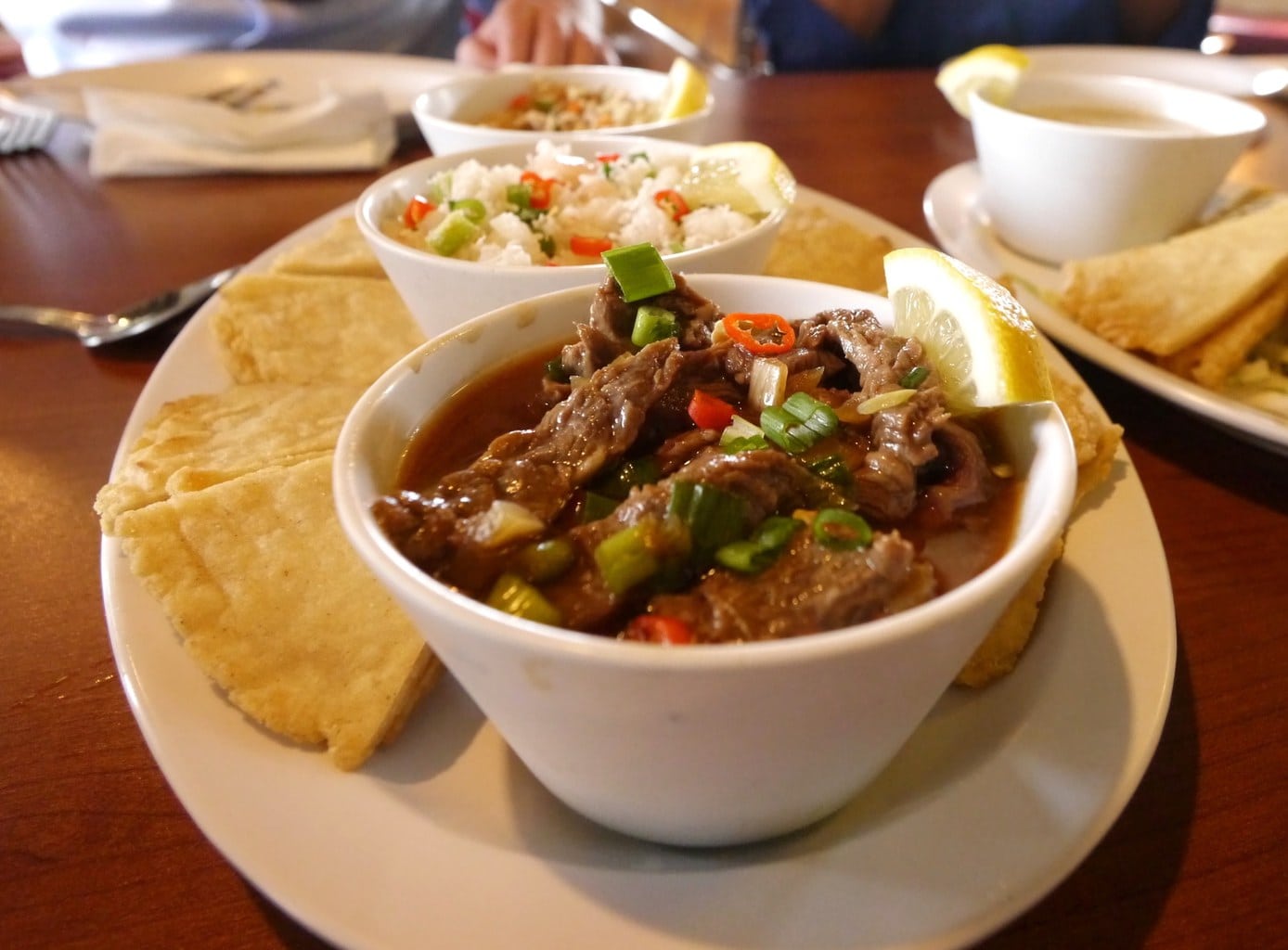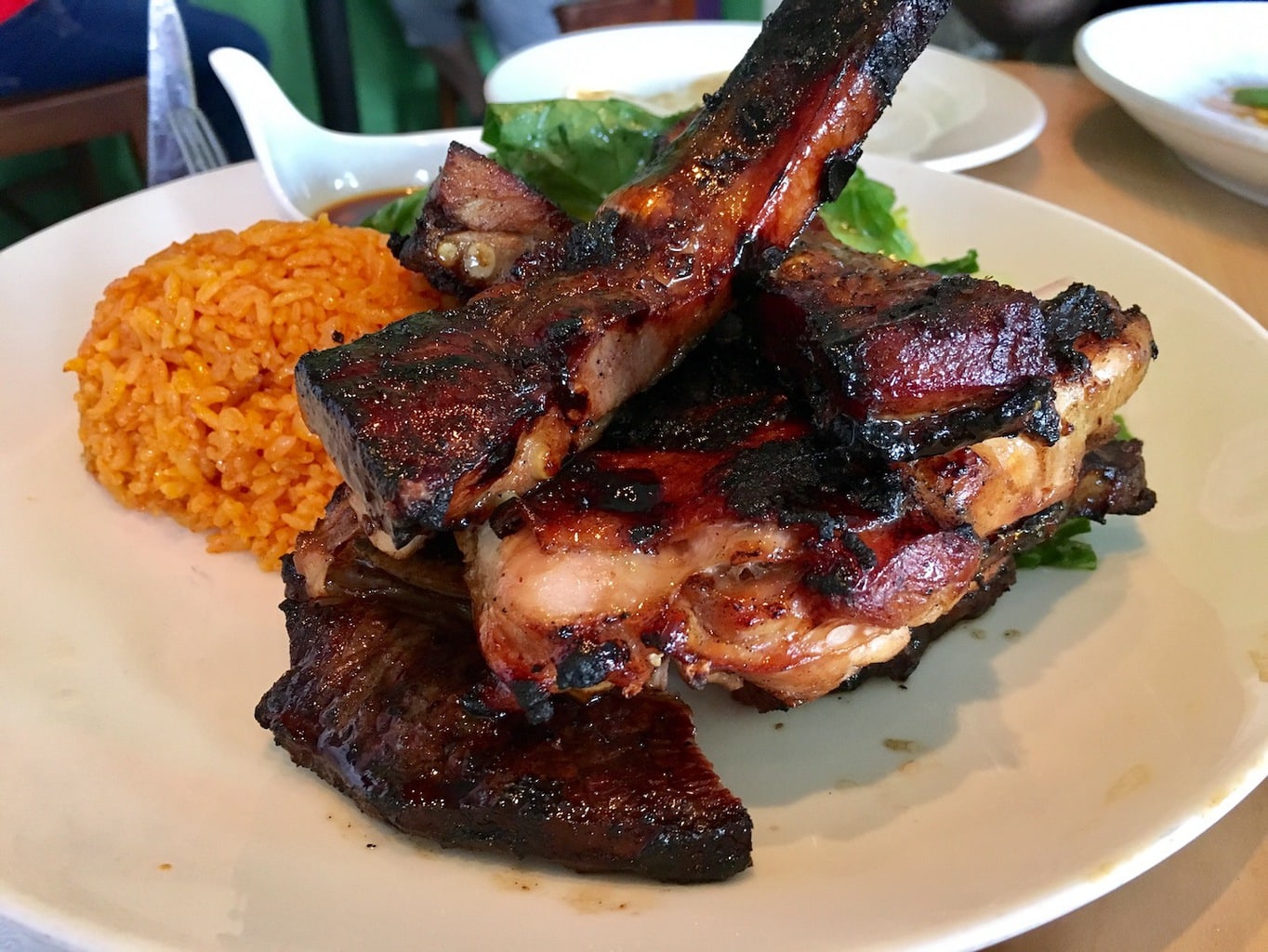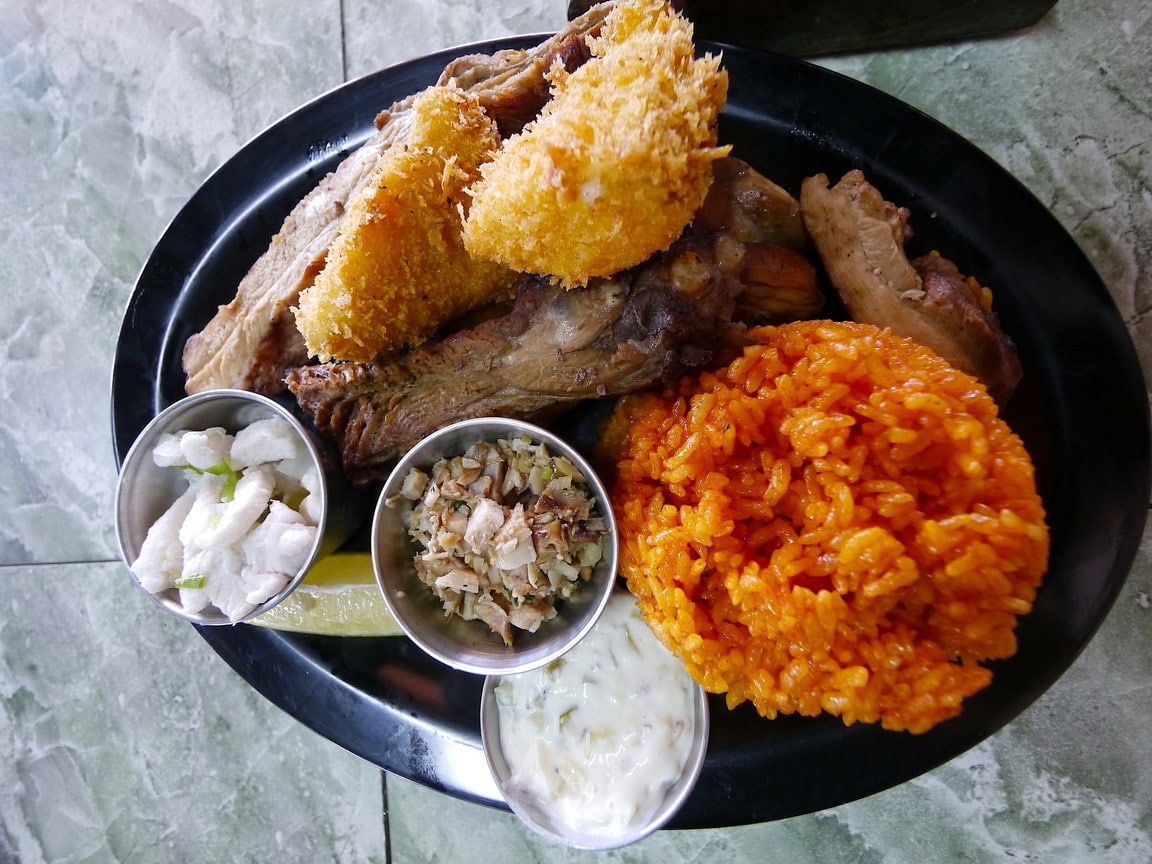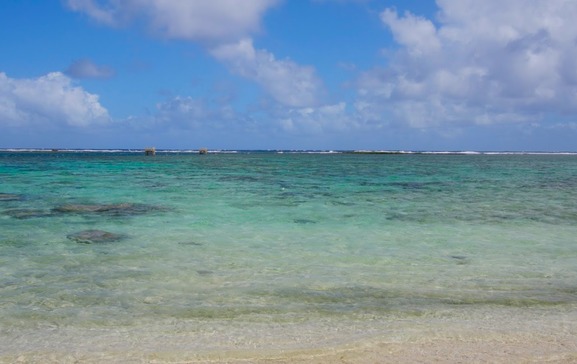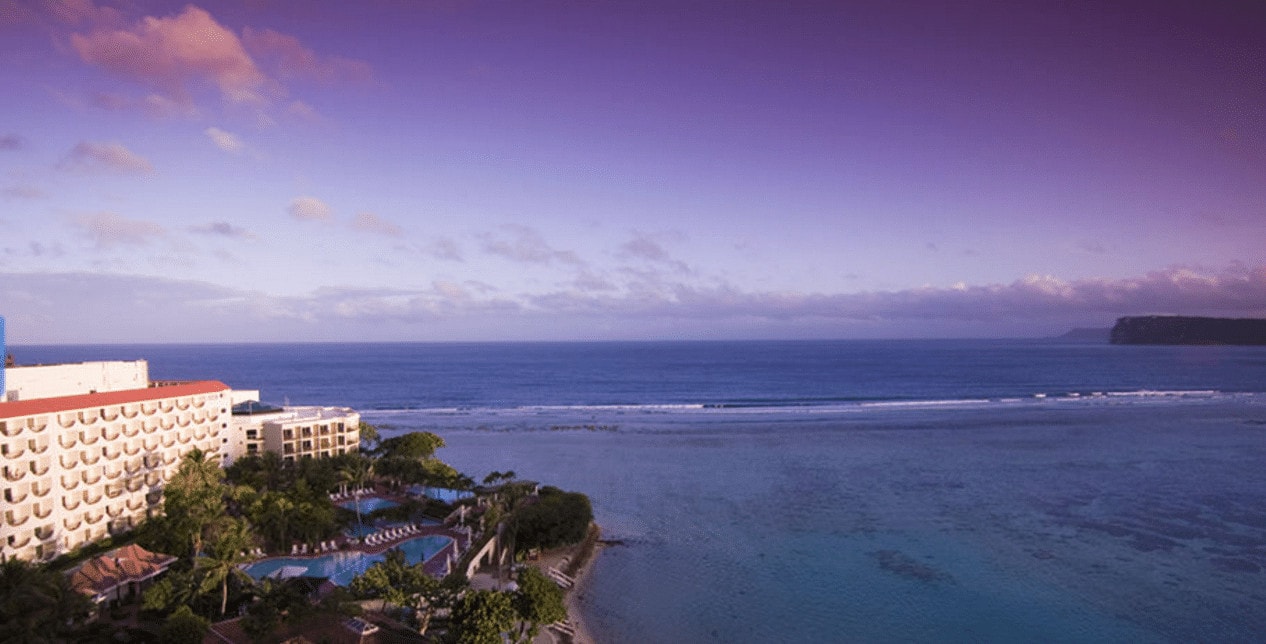This article was first published in January 2017 and was updated in December 2019.
Guam is an island in the North Pacific, around one third of the way between the Philippines and Hawaii, that is politically associated with the US as an unincorporated territory. No doubt some of the best things to do in Guam involve the beach, but there is so much more to explore.
As the airport hub in the Micronesia region, Guam is a common stop-over place and a popular tourist destination with over 1,5 million visitors a year. Although it seems so popular, mostly the Japanese, Koreans and mainland Americans have heard of this little paradise of beaches, marine life, duty-free shopping and strong naval military links.
Read on to find out all the things to do in Guam including places to visit, beaches to relax on, what and where to eat and also the best hotels in Guam.
Guam’s multi-cultural past
Guam was discovered by Ferdinand Magellan in 1521 on behalf of the Spanish Crown and was incorporated into the Spanish Empire under whose control it remained until 1898 when Spain ceded first and then sold it, together with other Mariana islands, to the US. This was also the year Spain lost its last colonies in Cuba and the Philippines.
Guam, and the islands around it, received the name of Mariana Islands from the Spanish Queen at the time. Even though this happened over four centuries ago, the Spanish influence is still strong today and can be felt in the language (which sounds like an ancient version of Spanish), the food, the religion and the traditions, like the Fiestas which are celebrated to honor the patron saints in each village.
The Spanish brought Catholicism to Guam, a religion that is very much still alive today. Jesuit Missionaries arrived a century after discovery and brought with them the religion and modern trading and farming techniques, as well as clothing.
From then on, Guam became a popular stop over island for Spanish ships en route between Mexico, in the New World, and the Philippines and Asia. The metals and gold mined from Mexico were being exchanged for silk and fine goods in China and the galleons that transported them often stopped in Guam.
After the Spanish left, Guam ended up in the hands of the US until WWII, when the Japanese Forces occupied Guam for the 3 years of the war, until the American army recovered it in 1944 as a stronghold and naval base in the Pacific, which it has remained until today. The Chamorro consider the recovery as their Liberation day and it has been celebrated since.
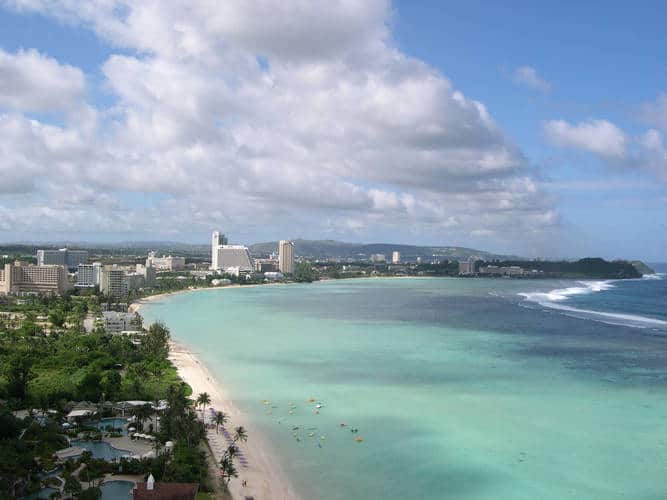
But before the West discovered Guam, the island was home to the Chamorro, a strong culture that is believed to be one of the oldest in Micronesia and which inhabited the islands for 4,000 years before the European explorers arrived.
The first settlers are believed to have come in canoes from Southeast Asia, navigating with the stars through the Pacific. It is this ancient Chamorro culture as well as the traditions that blended with the West’s influence to create today’s fascinating cultural melting pot.
An interesting fact about Guam is that it’s a US unincorporated territory, which means that Guam has limited freedom of self-governance. Its population are US citizens when born but cannot vote for the President, just like American Samoans.
Because Guam is located across the dateline from the US, it is often referred to as “Where America’s day begins”. On the other end, American Samoa is the last part of the US to wave goodbye to every day.
Tourism in Guam
After WWII and independence, an inaugural PanAm flight in 1964 kicked off tourism for the island and things have never been the same again. Among all the countries and islands in the Pacific, Guam is the most developed. Solid infrastructure and luxury hotels coupled with shopping malls and great facilities make Guam the Jewel of Micronesia.
Its relatively small size of about 45km by 20km makes it easy to cover entirely during a holiday, although there is a lot to do so you will need a week to truly immerse yourself.
Guam is a compact but exciting destination. As a Pacific island with a combination of beach and volcanic shores, it is a great sun and sea escape. Its rich heritage, with Spanish and Japanese influences, provides a great insight into Chamorro culture, a very unique and fascinating tradition, especially to someone like me who comes from Spain.
Life at sea is fantastic as well, with plenty of opportunities for diving, dolphin spotting, swimming with turtles and snorkeling. On land, there are waterfalls, natural swimming and sink holes, mangroves, rivers and mountains. In short, the are many things to do in Guam.
Perhaps the most interesting and warm part of Guam is the “Hafa Adai” (Hello) spirit, the pre-disposition to welcoming visitors with open arms. You will first experience this spirit without a question as soon as you arrive from the officers at the Immigration check point to all the people you will meet along the way.
I felt it in my own skin when Regina, from the Tourism Board of Guam, invited me to her house on New Year’s Eve to celebrate the new year and the A Novena, a 9-day prayer done in honor of special occasions and saints. The whole extended family amounting to 300 welcomed us as if we were long term friends. I only wished I did not have a fly to Yap that evening.
Although you may have never heard of Guam, about 1,5 million visitors arrive in Guam every year, though they come mostly from the Far East. Koreans are currently the number one nationality followed by Japanese, but countries like China and Russia are growing fast. As a US territory, Guam also receives a lot of mainland visitors, especially families of army personnel stationed in Guam.
The US has three bases in Guam, including a naval base, a hospital and a naval airport. It is estimated that there are 15,000 soldiers and naval personnel stationed at Guam. However, as a visitor, unless one of the large naval ships is stationed in Guam during your visit, you are unlikely to see any army presence. The Naval bases are tucked away in fenced off areas and you cannot even tell they are there.
Things to do in Guam
You could go to Guam over and over again and have a different holiday every time. I felt that the island was a bit like Bali which also offers many different types of holidays.
Visit the best Guam Beaches
Note: Save the map above for offline use as it has all the locations of the beaches mentioned below.
Contrary to other Micronesian islands like Yap or Chuuk, Guam has plenty of sand to play on, much like the South Pacific islands. Some parts of Guam are protected by a reef and provide calmer and shallow waters in a turquoise dreamy blue. The area where the luxury hotels are in, Tumon Bay, is crowded but has a nice beach.
In the north, there are two beaches worth checking out. One is Ritidian Beach which features white sand and clear waters and is considered a Wildlife Refuge. As such, opening times are reduced to 4 days a week.
Ritidian is also Guam’s Crown Jewel and the best looked after and most beautiful beach. The other one is Tanguisson Beach Park which has interesting volcanic rock formations and there is a sinkhole near the beach. There is both white sand as well as rocky outcrops that display interesting rock formations.
In the center, Mata’pang Beach Park is a good place to spot outrigger canoes at sunset and there are pavilions that can be used for BBQs or picnics. Since there is a lifeguard on duty here this is a safer beach for the little ones.
The same can be said of East Agana Bay Beach where the beach clubs offer water sports and there are plenty of restaurants and bars to keep you well fed. Gun Beach, right under Two Lovers Point, has some of the most beautiful waters in that turquoise blue that is so postcard perfect.
There is also a beach bar and the access road has now been paved for an easier drive. The beach’s name comes from one of the WWII guns that is still there, at one end of the beach.
In the south, the black sand beach at Talofofo Bay is an unusual spot. The large closed bay is popular with surfers.
The Inarajan Pools Beach is a nice protected series of natural pools with BBQ spots and green fluffy grass where you can lay down.
As it is protected from the sea by volcanic walls, the waters are clear and calm like a pool. This is a very popular spot on weekends. Originally, the pools had a pavilion but the many typhoons that occasionally hit Guam destroyed it and now there are just the ruins.
Snorkeling, kayaking and other water sports in Guam
Guam has kilometers of beach on which all sorts of water sports can be enjoyed. Pretty much every beach resort will have equipment like kayaks, snorkels, wind surfing, surfing, jet skiing, fishing, you name it.
Guam’s protected waters are also a great place to see some marine life, even if you are not a diver. You can go snorkeling with turtles and even spot a dolphin or two. The corals are also great. The waters around Guam can have strong currents, so be careful where you snorkel.
I went on a dolphin watching and snorkeling tour with Shotguns which was great. They provide all equipment and the boat is pretty solid. We saw plenty of dolphins and then snorkeled with turtles at one spot and explored corals in another.
Dolphin watching
And talking about the cute critters, dolphins are in Guam all year round. Because swimming with them is forbidden and they are protected, they are not shy. If you go on a dolphin watching tour you are sure to see them.
Dolphin tours can be easily combined with a snorkeling trip for a half day excursion and I did mine with Shot Guns who had a lovely crew who knew what they were doing and were careful about safety.
Diving in Guam
Diving in Guam is cheaper and more accessible than other places in Micronesia. You can dive WWI and WWII ship wrecks as well as corals and spot some large fish. There are 150 dive sites in Guam but what the island is known for in terms of diving, is its Blue Hole.
This is a 90m hole in the reef that drops far down but there is a hole on the side of the reef at 38m which allows divers who can go that deep to ascend back through the hole.
Lastly, although Guam is not as much a wreck capital as Chuuk is, the island is home to the unique double wrecks of Cormoran and Tokai Maru. These are two ships from two different wars that happened to sink in the same spot and are touching, one on top of the other.
Valley of the Latte Adventure Park
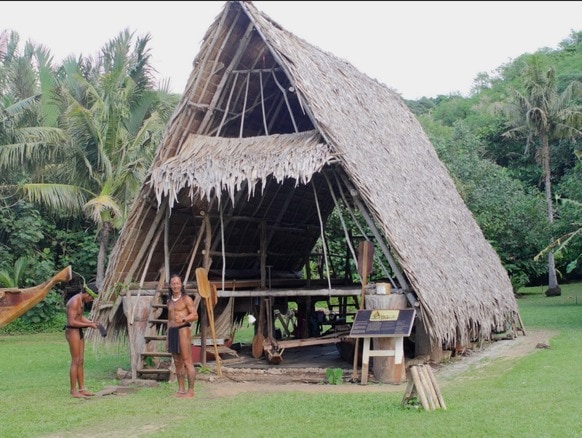
The Valley of the Latte is a great cultural experience that combines a river cruise through lush and green mangroves with some cultural opportunities to learn more about latte, canoe making and Chamorro heritage.
Your adventure starts with a river cruise and then you can pick how long and how much you want to do. There are kayaks, stand up paddle boards, the chance to come up and close with the local animals, including the native water buffalo or Karabao, see how baskets are weaved, and learn about the ancient tradition of latte.
You can also chat to one of Guam’s only remaining seafaring canoe Master makers, Ron, the founder of non-profit organization Ulitao who are charged with preserving the Chamorro tradition of canoe making.
Golfing
Guam is a golfer’s paradise. The tiny island has seven golf courses and one driving range. Some have been designed by world class players and are visited by repeat visitors regularly. As the weather in Guam is always pleasant but never too hot, golf can be played all year round.
Chamorro Village Wednesday Night Market
The Chamorro Village can be visited at anytime but it is best experienced on Wednesday night when the local market is on. There, you will be able to find plenty of local food, crafts, learn more about the local skills and traditions and buy lots of souvenirs.
Two Lovers Point
Guam’s most famous landmark, Two Lovers Point, is a lookout from where the entire bay can be seen. It is also a place where lovers can hang locks with hearts and wishes.
The area is filled with hundreds of colourful heart-shaped notes in all languages professing feelings to all four cardinal points. This is Guam’s most visited sight so it is best seen in the early morning when the tourist buses haven’t arrived yet.
The legend of Two Lovers Point is that of a forbidden love. The story has it that a wealthy Spanish man had arranged for his daughter to marry a famous captain. When the girl found out, she ran away to Two Lovers Point where she met a local Chamorro warrior and fell in love.
Running away from the father and the Spanish army, the two lovers met at sunset and, faced with their inevitable fate, tied their hair together, kissed one last time and leaped into the ocean.
Statue of Liberty
Not as big as the original one in New York, Guam’s Statue of Liberty was built by the Boy Scouts of America in 1950 to celebrate their 40th anniversary. The statue faces the sea and has a nice view over the bay.
Plaza de Espana
Another popular sight among visitors, Plaza de Espana used to be the residence of the Spanish Governor during the colonial times. The structure was damaged during the Liberation in 1944 but you can still see the main archway, the patio and the small building which used to be the chocolate house.
The gardens around the remaining ruins are peaceful with some incredibly old and beautiful trees.
Dulce nombre de Maria Cathedral
Right next to the Plaza de Espana, this church is believed to have been built in the original site of the first church in Guam and remains the most important and beautiful.
Inside, you can see Guam’s patron saint, our Lady of Camarin. Right across the street from the cathedral you will see a small rotating statue of Pope John Paul II to commemorate his first visit to the Marianas in 1981.
Latte stone park
The Latte Stone Park or Senator Angel Santos Latte Park is an opportunity to see the ancient Marian Island structures used to build Chamorro houses. The latte as made of two pieces of stone, a column made of limestone and a capstone made of natural coral heads.
Latte stones can only be found across the Marianas, Guam, Rota, Saipan, Tinian and Pagan but the easiest place to see them is at Guam’s Latte Stone Park which has a group of 8 on display.
Historically, the elderly’s jewelry and bones were buried under the Latte to signify that the “knowledge of oral history, legends, songs, chants, lamentations and navigational heritage built from the past would become the literal latte pillars guiding and protecting the house or the next generation”, as research indicates.
Lattes were built from as early as 500 AC and their use started to decline with the discovery of the island by Magellan. Most of the structures are made of pairs of 6-8 lattes arranged in parallel to each other. A roof was placed on top of the pillars. The largest latte found has 20 columns.
Cocos Island
A good day trip is a ferry ride to Cocos Island (website only in Japanese), a sort of sandbank about 4km from the southern most tip of Guam where you can enjoy true island life at their day resort just a short ferry ride away.
There is a bar and restaurant, all sort of water sports and even an ice cream parlour.
Fort Santa Agueda
A remnant from the Spanish period, three canons are still located at this view point over the bay. Make sure to try the coconut sashimi by the fort. Joe Roberto, a coconut stall vendor, came up with the idea of scooping the young coconut meat and mixing it with soy sauce and wasabi.
The consistency of the young coconut gives it a sashimi like texture and the savory soy sauce and wasabi are a fantastic combination. Although you will find this snack everywhere in Guam, the original one is by the Fort.
Joe usually sells out by noon so come in the morning. He likes to come early, as early as 5am, to see the sunrise. He has been doing this for 26 years and the formula clearly works.
Namo Falls tropical Garden
Guam is lush and rainy. So much so that the locals told me it is one of the best places to spot a rainbow as there are several every day as rain drops when the sun is still shining.
The large amounts of rain also feed mangroves, rivers and waterfalls, of which there are many on Guam. Namo Falls tropical Garden is a pretty park with two waterfalls on opposite ends and lovely gardens.
Pacific War Museum
The Pacific War Museum is a private museum started by a veteran and is today one of the largest collections of WWII relics in the Pacific, welcoming 100,000 visitors a year. The collection is hosted in a group of freight containers, airport jetways and a quonset hut that have been adapted to contain all the items.
Both American and Japanese memorabilia and artefacts are on display, with proper labels and translations in both languages. You are encouraged by the care taker, also a volunteer, to get into the guts of the tanks, the cars and everything that is on display and, I warn you, WWII tanks are pretty dangerous inside, filled with sharp ends and rusty bits.
For a private collection gathered out of love, it is pretty impressive to see. The Museum also has a couple of sections with documents and other smaller relics that are not war equipment.
You will also be able to read the story of the Japanese soldier who managed to hide in the Guam jungle for 27 years after WWII ended, living in a cave and being completely self-sufficient, until he was found, in pretty good health considering the circumstances.
Sheraton Cultural Dance Show
This is the only dinner show on Guam that features Chamorro culture and traditional dances and not the Polynesian versions that you can find at other hotels. After all, you are in Guam so it is best to discover the local heritage.
The Sheraton Island feast BBQ dinner offers a buffet and a table side BBQ, Korean style, for guests to pick their raw meats and seafood and cook it to their preferences. During dinner, a local Chamorro dance group called Pa’a Taotao Tano’ will share the dances and singing of the island in a colourful feast to the senses.
I loved this because it was special and genuine. It was not a tourist show put up without tradition like the ones I saw in Hawaii, but a genuine group of people loving Chamorro culture and wanting to share it with the guests.
One of the island’s most famous Master dancers was also present as he manages the group. The title of Master is only given to distinguished experts in a specific guild. You will also get the chance to get on stage and participate.
The best Guam food to try
Guam’s multi-cultural past has given it a very rich and distinctive cuisine with lots of Spanish, Japanese, American and native influences. Talking about Guam is talking about Guam food. It is as much an integral part of the culture as anything else. Some of the foods you should definitively try are below.
Red rice
Unlike Bhutan, Guam’s red rice has been coloured and flavoured by the annatto seed and is reminiscent of Mexican red rice. The seeds release the color when soaked in water.
Kelaguen
My favourite dish in Guam is traditionally prepared with chicken but can also be made with beef, fish and prawns using the same recipe similar to ceviche: chopped meats with lemon juice, salt, grated coconut, and hot red peppers.
Chamoro BBQ
The most typical dish that you can find pretty much on every Chamorro table is the BBQ. Usually, you will get chicken and ribs that have been marinated with soy sauce and vinegar or other rubs and then cooked in the open grill. Finger licking good!
Finadenne
A dipping sauce that goes perfectly well with the BBQ meats and other fried food and that is served on every Chamorro table. Finadenne is made mixing soy sauce, vinegar or lemon juice, chopped white onion, and fresh chili peppers.
The best Guam restaurants
There are countless places to grab a meal in Guam, from the American fast food chains to the restaurants in the large hotels, but here are a few authentic Guam restaurants I tried and tested and which deserve a trip.
Proa
Guam’s best restaurant has two locations, one of which is in Tumon and easily found across the entrance from the Hilton. Proa offers Chamorro food with a decidedly Asian influence and creative fusion dishes.
The portions are enormous, so beware when you order unless, you want to leave with more food packed in your doggy bag than you ate (it happened to us!).
Proa has dishes that are as unexpected in Guam as snails, and a Japanese and Filipino flavor in a lot of the recipes. The BBQ is very tasty and the fish dishes are fantastic. Leave space for the coconut banana with ice cream.
Pika’s Cafe
Pika’s Cafe seems to be a local favourite that most people enjoy. It is a great place for a rise and shine brekkie, brunch or lunch, and has recently also opened for dinner. Fill your tummy with yummy foods before setting off to explore the island.
Terry’s Comfort Food
Terry’s Comfort Food is the most authentic, unpretentious and typically Chamorro place for a meal. Entering Terry’s is like going to visit a friend. The waiters are friendly, the food is just like your mum (if she was Chamorro) would cook and the portions are giant.
The restaurant used to be in the village where Terry grew up and then opened in Tumon on the main road. Everything here is real food and it tastes fresh and delicious.
The kelanguen trio is fantastic, the aubergine with coconut milk creamy, the BBQ ribs are delicious, even the simple red rice is to die for. If you want to experience real Chamorro food, there no better place than Terry’s.
Jeff’s Pirate Cove
Run by Jeff for the last few decades, Jeff’s Pirates Cove is a restaurant and bar that is a great place for lunch with sea views and a breeze. It is right on the beach, it has a fully stocked bar with all sorts of beers, a menu filled with Chamorro specialties with a Greek touch for a healthy serving of feta cheese salad and hummus. It also offers free WiFi.
Jeff is a character himself and worth a chat, just say hi and I am sure he will be happy to explain how it all began. The restaurant is located on the bay that was originally called Pirate’s Cove as it was indeed the place where pirates used to be anchored. The sea has that perfect turquoise colour.
The Chamorro BBQ is excellent here, truly finger-licking. There is a pirate shop which is a good place for a souvenir. Jeff’s Fiesta dish has a bit of all the Chamorro dishes (BBQ, red rice, kelaguen) and it is great – share it between two, you’ve been warned!
The most luxurious Guam hotels
There are almost 9,000 hotel rooms on the island so there is something for all budgets and a long selection of alternatives. Here are the best luxury Guam hotels.
The Dusit Thani
The Dusit Thani Resort is the hotel of superlatives. It one out of two 5* resorts in Guam, and the tallest structure. The newest arrival, which also shares 5* status is The Tsubaki Tower, which opened in April 2020.
The rooms are modern and sleek and some of them have outdoor swimming pools with sea views. If you are looking to splurge this is the only place to do so.
Book your stay on Booking.com | Agoda
Lotte Hotel Guam
The second latest addition to Guam is the Korean multi-brand Lotte, famous for their Duty Free shopping, which is also one of the best things to do in Seoul. This modern resort is much smaller than the rest, in fact, for Guam’s standards it could be considered a boutique hotel, although it still features over 200 rooms.
Lotte Hotel is located at one end of Tumon Bay so it also has panoramic views of the bay.
Book your stay on Booking.com | Agoda
Hilton Guam Resort & Spa
The oldest hotel in Guam and the first ever built in the 80s, Hilton Guam Resort & Spa has the experience of a hotel that has been around and almost 650 rooms to prove it.
Its location at the end of Tumon Bay also gives it panoramic views of the bay. There are a few pools and a shopping arcade and the service is friendly. I stayed there and found it to be good value for money. There is a reason it has withstood a few decades. Expect a decent 4* resort.
Book your stay on Booking.com | Agoda
Westin Resort Guam
Another institution on Guam, the Westin Hotel has some of the largest rooms in Guam and every guest room has a balcony, although not all are sea facing. It is another big hotel located right next to the Lotte at one end of Tumon Bay.
Book your stay on Booking.com | Agoda
Hyatt Regency Guam
A large 450-room resort on Tumon Bay, Hyatt Regency Guam has been around for a while. There is everything you would expect from a large resort including three swimming pools and all sorts of facilities for children and families.
There is a chapel for weddings with sea views and a large shopping arcade. If you were looking for an all-inclusive holiday by the sea and without any reason to leave the hotel grounds, the Hyatt would probably fit the bill.
Book your stay on Booking.com | Agoda
Sheraton Laguna Resort Guam
The Sheraton Laguna is homey and has a few elements that made me like it. Some of the sea facing suites have outdoor jacuzzis from where to soak while watching the sunset, champagne glass in hand.
Their chapel for weddings is up high on the hill with 360 degree views of the bay and the sunset, simply stunning. Their sunset bar has fabulous views of the sea with the picturesque usual paddlers and surfers to provide some colorful photographs.
And, most importantly, even if you do not stay there, the Sheraton Guam is the only hotel on the island whose island evening feast features Chamorro dances, true locals with a passion for their heritage. It is well worth a trip.
Book your stay on Booking.com | Agoda
Guam Logistics
Here are a few more pointers on how to get to Guam and the best times to visit so that you can take part in all the best things to do in Guam hassle free.
How to get to Guam
Guam can be reached from the main Far East cities in Japan, Korea, Taiwan, Philippines, Russia and even China. There are also flights from mainland US and Hawaii and connections to other islands in Micronesia like Yap, Chuuk, Kosrae and Pohnpei as well as Palau.
The airport in Guam is an interesting mix of people passing through between the hours of 4-10am and 6-9pm with flights landing and departing to all the destinations in the region. As all arrivals must exit and re-enter the airport after, there is a lot of traffic when collecting luggage.
United Airlines uses Guam as their main hub in the region and runs a shuttle service connecting Yap, Guam, Chuuk, Kosrae, Pohnpei, Saipan, Hawaii and Palau as well as the other major capital cities. There are charter flights from Korea and Japan as well as regular flights on the local airlines. You can also fly JejuAir from Korea and Cebu Pacific from the Philippines.
Lastly, Guam offers a visa waiver system to a lot of nationalities. In addition to the usual ESTA waiver program from the US, Guam does not require the citizens of 12 countries to even apply for ESTA and they can enter Guam by filling a landing card.
The countries are Australia, Malaysia, Singapore, Brunei, Nauru, South Korea, Hong Kong, New Zealand, Taiwan, Japan, Papua New Guinea and the United Kingdom. More details here.
When to visit Guam
Guam has a tropical and temperate weather all year round so it is always a good idea but you should avoid the rainy season between June and November if you want to enjoy the sun and sea.
Although, even in the rainy season, showers are tropical and short. During the first months of the year, the winds are strong so you will not be hot at all and the weather will be great for surfing, windsurfing and other water sports.
Pin this to your #islandgetaway Pinterest board
- Check if you need a visa, get help processing it at iVisa.
- Never ever leave without travel insurance. Get affordable coverage from World Nomads or long term insurance from Safety Wing.
- I find all of my flights on KAYAK. Check their Deals section too.
- Search for all your transportation between destinations on the trusted travel booking platform Bookaway.
- I book all my day trips and tours via GetYourGuide, they are the best and their tours are refundable up to 24h in advance.
- Get USD35 off your first booking with Airbnb.
- Compare hotels EVERYWHERE at HotelsCombined and book with Booking.com.
- Compare car rental prices at Rentalcars.com




